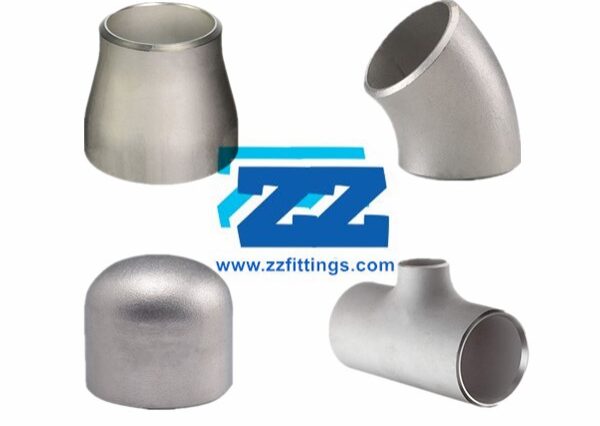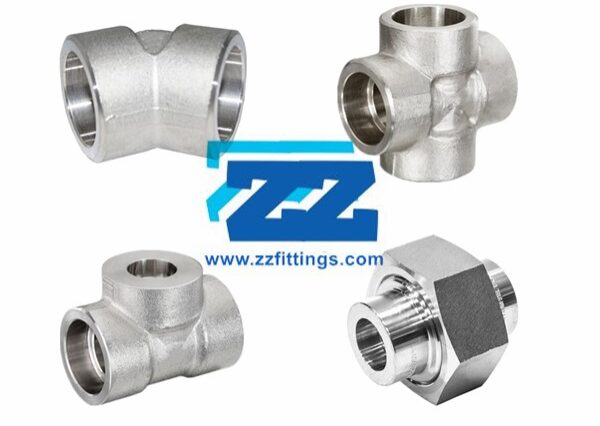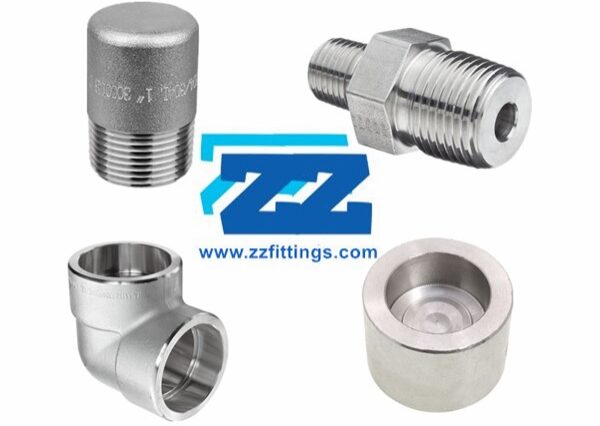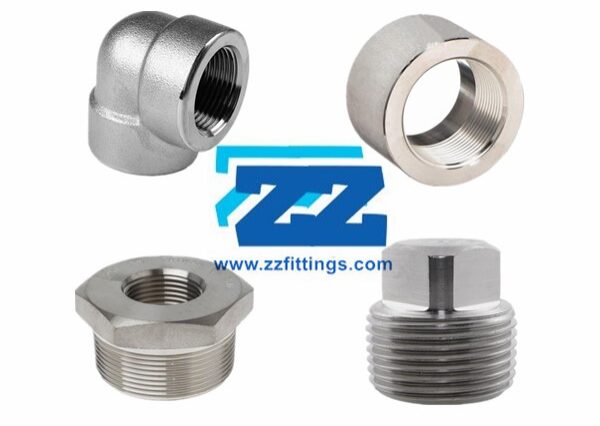Top Suppliers provide Stainless Steel Fitting & pipe fittings to use in a piping system, for changing direction, branching or for change of pipe diameter. And which is mechanically joined to the system.
There are two types that butt weld fittings and forged steel fittings. Both of them include a wide variety of different types and schedule sizes. seamless and welded butt weld fittings with dimensions ranging from 1″ to 48″. Forged steel fittings are available in threaded and socket weld versions; dimensions ¼” to 4″ and pressure classes 3.000 lbs, 6.000 lbs and 9.000 lbs.
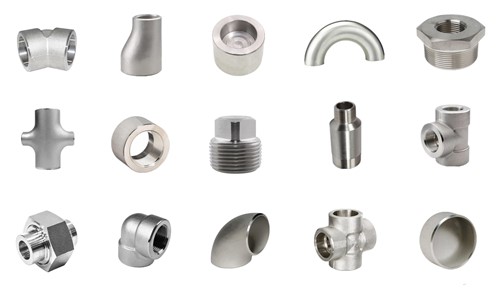
Stainless Steel Butt Weld Fittings Manufacturer
We have international leading production and technology for stainless steel pipe fittings,and insisted on the production concept of safety and environmental protection.
A piping system using butt welding fittings has many inherent advantages over other forms.
- Welding a fitting to the pipe means that it is permanently leak proof
- The continuous metal structure formed between pipe and fitting adds strength to the system
- Smooth inner surface and gradual direction changes reduce pressure losses and turbulence and minimize the action of corrosion and erosion
- A welded system utilizes a minimum of space
SS Butt Weld Fittings
Specification
| Specifications: ASTM A403 / ASME SA403 |
| Dimensions: ASME/ANSI B16.9, ASME B16.28, MSS-SP-43 |
| Size: NPS 1/8″ to 48″ . (Seamless & 100% X-Ray Welded, Fabricated) |
| Type: Seamless / Welded / Fabricated |
| Thickness: Sch 5s, Sch 10s, Sch 40s, Sch 80s, Sch 160s, Sch XXS |
Shape
| Elbow 45° and 90° – long radius is standard; Short Radius is also available. |
| Return bend 180° – Long Radius is standard; Short Radius is also available. |
| Reducer – Concentric and Eccentric. |
| Tee – Equal and Reducing. |
| Cap – Butt Weld |
| Stub End – Long and Short Pattern |
What is Pipe Schedule?
For stainless steel pipes & fittings of all dimensions the outside diameter (O.D.) remains relatively constant. The variation in wall thickness affects only the inside diameters (I.D.).
A schedule number indicates the approximate value
Schedule = 1000 P / S
P = service pressure (psi)
S = allowable stress (psi)
The higher the schedule number is, the thicker the pipe is. Since the outside diameter of each pipe size is standardized, a particular nominal pipe size will have different inside pipe diameter depending on the schedule specified.
Stainless Steel Forged Fittings Supplier
Screwed and Socket Weld Fittings constitute to forged steel fittings in specification of ASTM A182. Piping systems can be connected using stainless steel threaded fittings – BSP and NPT threaded (Class 3000 & 6000) high pressure fittings in Grade 316. Socket weld fittings are used in high pressure ( 3000lb, 6000lb, 9000lb) piping systems and are commonly available in grade 304/304L & 316/316L.
Shape
| Stainless Steel Elbow – Socket Weld and Screwed Type. ASME B16.11 & BS3799. |
| Stainless Steel Threaded Plug and Bushing. |
| Stainless Steel Nipple – Screw, Swage and Hexagonal Nipple. |
| Stainless Steel Cap – BSP & NPT Threaded Cap and Socket Weld Cap. |
| Union – 316 & 304 Stainless Steel Union in BSP, NPT and SW Type. |
| Stainless Steel Tee – Equal and Reducing Type in Socket Weld and Threaded. ASME B16.11 & BS3799 Standard. |
| Stainless Steel Pipe Coupling – Socket Weld and Threaded Full & Half Coupling. Available in Class 2000, 3000, 6000 and 9000. |
Characteristics of Stainless Steel Fittings
Steel pipe fittings are basically used for piping and tubing systems to connect and change direction of the flow that conveys liquid, gas, and occasionally solid materials. Stainless steel pipes & fittings are strong and durable metal which is manufactured as an alloy of chromium and steel. There are various characteristics as following:
· Corrosion resistant
· Highly durable
· Lightweight
· Low maintenance
· Long service life
Difference between Stainless Steel and Mild Steel?
Mild steel also known as plain-carbon steel, is now the most common form of steel because its price is relatively low while it provides material properties that are acceptable for many applications. Mild steel is a class of steel where the carbon content is within 0.1 to 2.0 %. They are mainly low alloyed and used in various structural applications.
Stainless steel is class of steel where the chromium content will be 10% minimum. Stainless steel does not readily corrode, rust or stain with water as ordinary steel does. However, it is not fully stain-proof in low-oxygen, high-salinity, or poor air-circulation environments.
Benefits of Using Stainless Steel Pipes Fittings
There are an extensive range of applications that demand stainless steel pipe fittings including domestic regions, commercial offices and automotive industries. These have been very beneficial and effective in numerous industries most especially in industrial processes.
As time passes and non-stop innovation, these pipes and fittings are becoming an essential part of people’s lives since these are highly effective and accessible in various diameters and sizes. Stainless steel pipes and fittings are beneficially used where high level of resistance is needed to tolerate external and internal pressure in a system.They have the capability to handle stress for various piping applications. And strong to perform well under the toughest and harsh conditions.
Stainless steel pipes and fittings are extremely useful for indoor and outdoor applications. These are very easy to clean and need less maintenance. Stainless steel is recognized for its hard core and robust quality and is easily recyclable in various industries which make stainless steel fittings a good choice for many piping requirements.
Place an order right now, we will not disappoint you.

